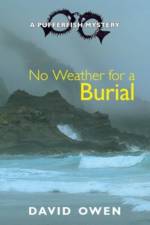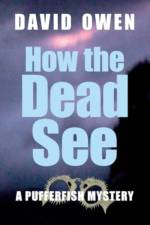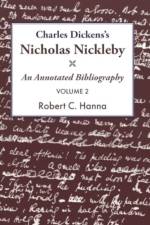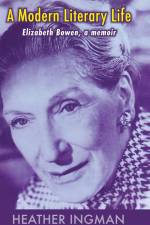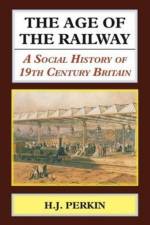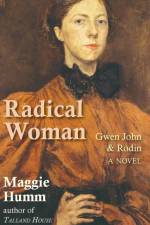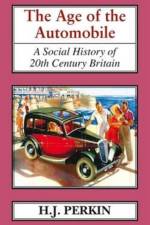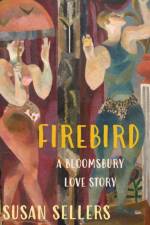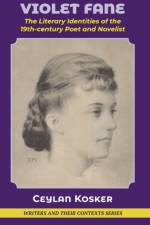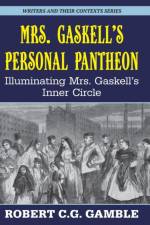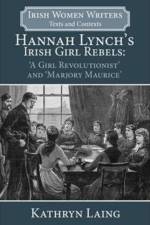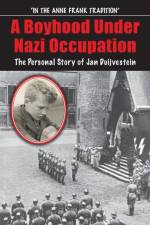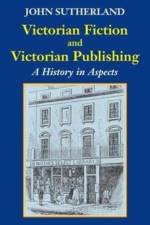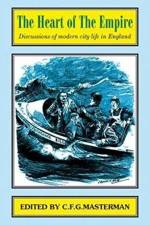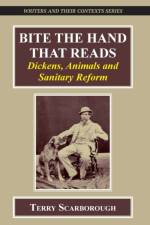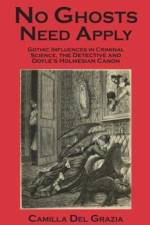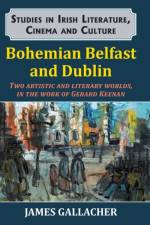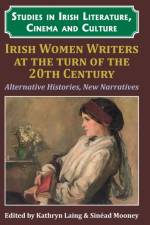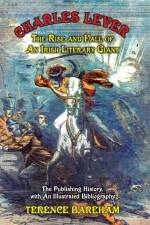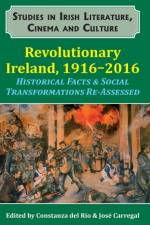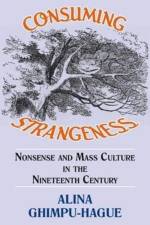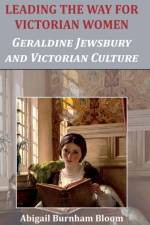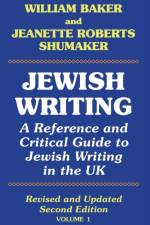Bøger udgivet af Edward Everett Root
-
636,95 kr. This is the first major account of an important part of the life of the naval officer who rose to be the eminent Admiral Sir John Corbett, KCB, (1822-1893) and became Commander-in-Chief in the East Indies and at the Nore. He played significant roles in the expansion and management of the British Empire, and his adventures including in the Opium War are visually captured by the full-colour and black and white illustrations, many from his own skilled paintings.The work draws on public documents, family papers, contemporary photographs, and the archive of Sir John's paintings which feature the many places where he served all over the globe.Corbett's informative detailed letters in particular provide an important insight into life in the Victorian navy in many parts of the world, and how senior officers recorded and communicated their experiences.The work starts with the shipwreck of HMS Wolverene in the Caribbean in 1855 and Corbett's subsequent court martial in Bermuda. It continues with the commissioning of his new command, the paddle steamer HMS Inflexible, in 1856 and his epic voyage towing a gunboat to Hong Kong in record time. The Shropshire-born officer served in China, India, the Mediterranean, North America, Syria, and on the East African coast. His descendant, David Peretz, provides Corbett's vivid detailed account of his time in China, including his involvement in the May/June 1857 actions there.
- Bog
- 636,95 kr.
-
150,95 - 260,95 kr. - Bog
- 150,95 kr.
-
150,95 - 218,95 kr. - Bog
- 150,95 kr.
-
218,95 kr. - Bog
- 218,95 kr.
-
- Bog
- 1.745,95 kr.
-
1.168,95 kr. THIS LANDMARK WORK of cultural synthesis clearly debates fundamental historical issues of morality, government, autonomy, power and self-responsibility, labor, exchange, household economy and consumption. It offers a wide-ranging social-historical assessment of the moralization of economic conduct among ordinary people in pre-modern Europe. / Its detailed survey presents a microcosmic view of the human condition. It resets the baseline for critical assessments of modern "capitalism" by offering an alternative to one of the most successful theories of the past half-century: E.P. Thompson's famous paradigm of the "moral economy." / This book casts modernity itself in a new light. It records and analyses many of the ordinary activities of ordinary people with a sympathy and a kindly wit which brings them to life after the lapse of centuries, uncolored by the heroics of popular but unhistorical romanticism. Professor Clark's observations are shrewd, real, compassionate, historically-based, and unsentimental. The work highlights fundamental understandings of the most fascinating sources and vignettes. It shows the richness and variety of human character and the implications of the social and moral changes which took place. / Clark begins with a critique of one of the most influential historical theories - that 18th-century food rioters gave voice to a widely shared "moral economy" in resistance to the advent of market capitalism. He offers a different way of thinking about what was "moral" in the economy of pre-modern Europeans. He pulls together recent work on economic and social history alike to show how both a zero-sum moral economy of honor and a surprisingly acquisitive individualism were pervasive in Northwest Europe over the six centuries before the Industrial Revolution.
- Bog
- 1.168,95 kr.
-
633,95 kr. This revelatory new work sets the life of one of the foremost writers of fiction in the 20th-century in its several contexts including her busy life in literary London, and her experiences during the Blitz (when she was an ARP Warden). / The author is a leading scholar noted for her work on Irish fiction, nation, women, and gender.
- Bog
- 633,95 kr.
-
549,95 kr. - Bog
- 549,95 kr.
-
288,95 kr. This major new novel by the best-selling Maggie Humm is the story of artist Gwen John's tumultuous affair with the French sculptor Auguste Rodin.
- Bog
- 288,95 kr.
-
287,95 kr. This fascinating novel prompts many unusual questions about the most famous play in the world. / It explores the mind of the quizzical Hamlet himself, and of Shakespeare - if he was, indeed, the author. / It features a 21st-century Psychotherapist of mixed race, Jacob Fortune, who doesn't like the age-old classic play - especially its conclusion. / In detective style, through virtual reality, he travels back to try to get into the mind of Hamlet, in order to change the narrative of the play and also to prove himself right about the false claim of authorship.
- Bog
- 287,95 kr.
-
549,95 kr. This lively work offers a wide-ranging account of the social history of the motorised age, and of the machine which has reshaped the character and development of the modern world.
- Bog
- 549,95 kr.
-
287,95 kr. This richly imagined novel tells the surprising story of two of Bloomsbury's most unlikely lovers - John Maynard Keynes, the distinguished economist, and the extrovert Russian dancer Lydia Lopokova. Firebird is the third novel of prize-winning author Susan Sellers, who is also an expert on Bloomsbury and the writing of Virginia Woolf. / Weaving biography and fiction, Firebird explores the tangle of Bloomsbury's bohemian relationships as lifestyles are challenged and allegiances shift following Lydia's explosive arrival. / It is the winter of 1921 and Diaghilev's Ballets Russes launch a flamboyant new production at London's Alhambra Theatre. Maynard Keynes is in the audience, though he expects little from the evening. Despite Lydia's many triumphs, including the title role in Stravinsky's Firebird, Maynard's mind is made up - he considers her 'a rotten dancer'. Besides, Lydia has at least one husband in tow and Maynard has only ever loved men. Tonight, however, he is moved by her performance, and when the ballet closes in financial disaster leaving its cast penniless, he invites Lydia to move into his Bloomsbury house. / No strangers to scandalously unconventional liaisons, Maynard's Bloomsbury friends - Virginia and Leonard Woolf, Vanessa and Clive Bell, Duncan Grant and Lytton Strachey - are intrigued to find the resolutely homosexual Maynard falling for a woman. They assume it is a passing fad. After all, Lydia is a noisy, uneducated chatterbox, while Maynard is a brilliant intellectual whose encylopaedic knowledge and genius for strategy have already made him indispensable to the Treasury. But when Maynard pulls out of a Royal Commission tour to stay close to Lydia, his friends realise they must act. As Virginia writes to her sister Vanessa, everything they value risks ruin from this 'parokeet' whose conversation is limited to 'one shriek, two dances'. Anything other than a brief affair would be 'a fatal and irreparable mistake'. Maynard must be rescued from himself. / Vividly recreating Lydia's life-changing journey from Tsarist St Petersburg to Jazz Age London via the Paris of Proust and Picasso, this compelling new novel celebrates a love story that is utterly unexpected, true, and stranger than fiction.
- Bog
- 287,95 kr.
-
- The Literary Identities of the 19th century poet and novelist
1.234,95 kr. The first book-length study of poet and political writer Violet Fane (Lady Mary Montgomerie Currie, n¿e Lamb, 1843-1905) recovers her work to a central position in the literary canon.
- Bog
- 1.234,95 kr.
-
- Representations of Fear and the Construction of Text in Charlotte Bronte's Jane Eyre
1.234,95 kr. This book offers a radical rethinking of Jane Eyre from feminist and post-colonial positions.
- Bog
- 1.234,95 kr.
-
- Illuminating Mrs. Gaskell's Inner Circle
1.244,95 kr. This new book vividly presents previously undiscovered biographical information about Elizabeth Gaskell, the author of Mary Barton, Cranford, The Life of Charlotte Bront¿, and Wives and Daughters. It also provides much contextual material about Harriet Martineau, the Bront¿ family and the history of Manchester.
- Bog
- 1.244,95 kr.
-
- 'A Girl Revolutionist' and 'Marjory Maurice'
348,95 kr. Hannah Lynch (Dublin 1859 - Paris 1904), restless wanderer, cosmopolitan, cultural observer and commentator, was the author of feminist fiction, travel writing and journalism. Her short story for girls, ''A Girl Revolutionist'' (1899) and serialised novella, ''Marjory Maurice'' (1884-85), were based on her own experiences as an active member of the Ladies'' Land League (1881-1882). ''A Girl Revolutionist'' (1899), published in Alice Corkran''s nineteenth-century girls'' magazine, Girl''s Realm, traces the ideals of young Moya O''Connell who ''dreamed of freeing Ireland'' that end in disillusionment. ''Marjory Maurice'' was serialised between 1884 and1885 in the nationalist ''story paper'', the Shamrock. The Ladies'' Land League activists portrayed in this narrative are not only New Women avant la lettre, but also canny and knowledgeable readers of the periodical and newspaper press in ways that anticipate the suffragette movement and their savvy manipulation of the press to further their own ends.The stories in this volume will be a vital resource for readers and scholars interested in Hannah Lynch, (Irish) New Girl and New Woman fiction, the Ladies'' Land League, literary representations of the land wars, nineteenth century periodical and newspaper culture and history. Reprinted here for the first time and fully annotated, the edition also includes a comprehensive introduction, bibliography and appendices of material relevant to the works'' social, political and publishing contexts. Together these short fictions offer vivid insights into the shaping of rebel feminist and nationalist identities in the closing decades of the nineteenth century.
- Bog
- 348,95 kr.
-
- The Personal Story of Jan Duijvestein
218,95 kr. The power of these first-hand and well-illustrated recollections about a boyhood in occupied Holland lies in their extraordinary ordinariness. / As the fourth child of a large Catholic family in The Hague, Jan was spared the horrors of true persecution by the Nazis. Yet his detailed memories of deprivation and dread vividly conjure up the harshness of Dutch life under Hitler's cruel rule. / Young Jan was roughly Anne Frank's age during the war. Published here for the first time, his wartime memories preserve yet another child witness to adult injustice. Touching and surprisingly witty, his stories demonstrate how danger and domesticity go hand-in-hand during wartime. / Jan was fortunate to survive the war. Born in 1931, he only died in 2019. / As a boy, he was able to slip past the Nazi occupiers unnoticed and unharmed, often running errands for adults who dare not show themselves, joining a hidden resistance. This is how Jan comes into brief contact with some of the war's heroes and villains. By chance, his after-school job as an apprentice-baker placed him at the side of a prominent member of the Resistance--while a random schoolyard spat with a bully brings him to the headmaster's office to face the boy's Nazi father, the Dutch leader of Germany's largest counter-intelligence programme. / For students of this important moment in history, each nail-biting recollection introduces features of the occupation with a disarming matter-of-factness: food coupons, bombardments, people forced to go into hiding, the constant search for food, the lack of electric light, curfews, coats sewn from blankets, and secret radio programs.
- Bog
- 218,95 kr.
-
- a History in Aspects
748,95 kr. This new book is concerned with Professor Sutherland's principal area of interest - the Victorian Novel and the complex machineries surrounding it.
- Bog
- 748,95 kr.
-
- Discussions of problems of modern city life in England
816,95 kr. The shocks to British society from the Boer War - and the discovery of the unfitness of soldiers was a seminal moment It was seen to represent all that was wrong, and corrupt, in British society. War abroad and poverty at home was a dangerous equation. Power at the perimeter of the Empire meant decay at its centre. It was these key problems which the expert contemporary contributors assessed.
- Bog
- 816,95 kr.
-
- Dickens, Animals, and Sanitary Reform
1.010,95 kr. This new book is about animals and the role they played in nineteenth-century social reform. More specifically, it is about how popular interests in zoology and changing attitudes toward animals at this time figured in the rhetoric surrounding sanitary debates. But it is also concerned with how literature actively participated in social change...
- Bog
- 1.010,95 kr.
-
- Gothic influences in criminal science, the detective and Doyle's Holmesian Canon
1.016,95 kr. This innovative new work highlights how the presence of Gothic elements in the Holmesian Canon problematizes the normative action of the detective. It examines the anxieties which accompanied the changing universe of Victorian and Edwardian society in the context of the development of criminal science. Recently the figure of Sherlock Holmes has been the object of countless re-writings, re-interpretations, and adaptations in a vast array of media including literature, graphic novels, TV series, and cinematic renditions. The vast majority of these adaptations tend to present the detective and his adventures as the triumph of rationality and of the scientific method over the disruptive forces of crime, but neglecting to take into account the dreadful considerations that these forces bring to light.Sherlock Holmes is generally portrayed as a beacon of rationality, the scientific detective par excellence whose logic solutions actively safeguard late Victorian and Edwardian society and its collective unconscious. His empirical approach to the mysteries he is called to solve usually sparks comparisons with thinkers like Tyndall, Huxley or Spencer, thus firmly encapsulating him in the positivist milieu of the time. Buried just beneath this normalizing façade, however, lies a complex relationship with the Gothic tradition and its tropes, an intertext which Doyle knowingly plays upon while openly disavowing it.The problematic distinction between "serious" realistic literature and the supernatural dates back to the dialectic between novel and romance, and was brought to the forefront during the Romantic age, especially in the context of the rise of the Gothic novel. Yet Gothic literature and its later incarnations, the Sensation novel and the fin de siècle horror, allowed for an unparalleled degree of freedom in tackling repressed anxieties in a variety of issues, ranging from heredity in all its connotations, to social mobility, to space and colonization.A perceptive writer, Doyle immediately recognised the potential of Gothic echoes in articulating disquiets produced by a multiplicity of factors: from scientific and technologic development and the uncanny possibilities they engendered, to the Imperial enterprise and the fear of contagion and reverse colonization, to the emergence of disruptive forces within the Victorian family and society, the ultimate objects of the detective's protection.
- Bog
- 1.016,95 kr.
-
- Two artistic and literary worlds, in the work of Gerard Keenan
1.234,95 kr. This significant new work redraws the lines of understanding around the literary networks of mid-to-late 20th Century Ireland, particularly between Dublin and Belfast. Such a direct and personal connection between the literary bohemia of Patrick Kavanagh and Flann O'Brien, and the world of the Honest Ulsterman at the start of The Troubles has never previously been made.This book brings to light, for the first time, the creative writing of Gerard Keenan - better known by his pseudonym 'Jude the Obscure', under which he wrote a regular column for the influential Northern Irish periodical The Honest Ulsterman for over three decades. He was also a contributor to Lagan and Envoy, and to Kavanagh's Weekly.The fictionalised biographical nature of Keenan's stories, written over the course of 40 years provides a unique depiction of Belfast as an artistic, literary and bohemian centre - a representation largely missing from popular and academic consciousness.Dr. Gallacher provides a major introduction as well as the texts of a series of Keenan's unpublished biographical short stories. These are drawn from a significant cache of his private papers to which he holds exclusive access. They range in subject matter from accounts of his association with Dublin's literary bohemia, particularly his tempestuous friendship with Flann O'Brien and Patrick Kavanagh and his time as a contributor to Kavanagh's Weekly, to his role in the founding of the Belfast Arts Theatre.This material is supplemented by a small but significant selection of long forgotten work published by Keenan under his real name in the 1940s and 1950s. This facilitates a strong positioning of Keenan alongside several significant moments in Irish literary history. This is underpinned by the extensive critical introduction that defines both the perimeters of Keenan's place within the Irish literary tradition, as well as establishing the corridors of connectivity through which his interaction with bohemian Dublin and subsequently The Honest Ulsterman were developed.The work offers explicit, thematic and stylistic connections between the two literary eras from the interplay between Keenan's early work for Envoy and the unpublished material utilised and presented in the volume for the first time. In addition, a significant battery of personal letters between Keenan and the H.U editors, Michael Foley, James Simmons and Robert Johnstone is presented within the book's introduction to highlight the extent to which the group sought to draw on and adapt the literary approaches of Kavanagh et al to facilitate a transcendence of the brutal realities of 1970s Belfast.This book is intended for scholars of both Irish literature and history, as well as those engaged in the study of peace building and conflict studies, given Keenan's representation of Belfast as a city possessed of more than sectarian antagonism. The joint presentation of original literary fiction alongside a weighty academic introduction will appeal to those involved directly in the academic study of Irish culture, and those with a more general interest in the literature and history of 20th-Century Ireland.
- Bog
- 1.234,95 kr.
-
- Alternative Histories, New Narratives
1.089,95 kr. This major new work on significant but neglected or marginalised late nineteenth-century and early twentieth-century Irish women writers could not be more timely. / This collection presents international research on the work of Irish women writers at the turn of the twentieth century. Discovering new voices and introducing original perspectives on the lives, works and networks of more familiar literary figures, these essays make a key contribution to contemporary feminist recovery projects and remapping the landscape of Irish literature of this period. / There is a burgeoning interdisciplinary and international field in which a diverse range of hitherto neglected Irish women writers have been recovered, and their lives, works, networks and other contexts illuminated. Irish Women Writers at the Turn of the Twentieth Century capitalises on this rich, diverse and innovative field, drawing on new scholarship that develops existing strands of enquiry further. It also opens up new avenues for exploration. / The strengths of the work is in its seeking of new engagements specifically in relation to Irish women's cultural economies, particularly literary networks, access to literary production and publication, the long nineteenth century and emergent modernist aesthetics. A further key concern is the politics of retrieval of lost women's lives and writings, the relationship of Irish feminist critical projects to the ongoing acts of commemoration associated with the formation of the Irish state, and increasing concerns with the future-proofing of 'lost' feminist digital recovery projects of the 1990s. / This new collection of original work offers new scholarship about these concerns in late nineteenth-century and early twentieth-century Irish women's writing. It draws attention to the significant figure of the Irish New Woman, feminism in the archives, vegetarianism and suffrage, anthologies and the canon, literary and publishing networks, digital methodologies, and women's writing and intellectual journals, newspaper and periodical histories. / Waking The Feminists, a movement campaigning for better female representation in the arts was established in Ireland in 2015. The launch of 'Fired!', a 'convergence of practising women poets and academics responding to the publication of The Cambridge Companion to Irish Poets (2017) protested against the exclusion of Irish women poets generally from the literary canon, including many who were popular and prolific during the nineteenth century. /Two recently held events - 'Irish Women Playwrights and Theatremakers' (2017) and the symposium, "Occluded Narratives: Researching Irish Women's Writing (2016) - foregrounded the interest in these areas and the plenitude of new research. The present book draws on work first presented at the editors' symposium, "Occluded Narratives: Researching Irish Women's Writing (1880-1910)" (May Immaculate College, Limerick 2016) where the Irish Women's Writers Network was also launched.
- Bog
- 1.089,95 kr.
-
- Bog
- 925,95 kr.
-
- The Rise and Fall of an Irish Literary Giant: The Publishing History with an Illustrated Bibliography
1.379,95 kr. This major new study of the publishing history of the Irish novelist Charles Lever gives in microcosm the history of a significant number of Victorian novelists, and of publishing itself in fast changing decades. The work illustrates the rise to prominence of the new railway libraries, the changes in taste and reading habits, and in marketing strategies as the century progressed. It shows the intimate relationships which often existed between publisher and authors, and the often feckless business sense of several mid-Victorian novelists.Charles Lever (1806-72) was one of the most prolific and best-selling authors of the 19th century. He was the best-known Irish novelist of the time, whose influence spread far and wide. The author of 37 books including Tom Burke of Ours, the best novel of the Napoleonic Wars, and many titles essential to a modern understanding of Irish life and society.Lever led a picaresque life: in 1827 he went to the Canadian frontier, passing some time with Indians. In 1828 he went to Germany, visiting Goethe at Weimar. He lived for many years in Italy, where he died. He was the friend and rival to Dickens, mentor to the early Thackeray, and praised and remembered affectionately by Anthony Trollope.He achieved great popular esteem in the 1840s and 50s, only to see his fame eclipsed by the vagaries of popular taste, by a radical change of style and subject matter, and by the constant antagonism of some of the Irish Nationalists. Truly his career was the rise and fall of a giant.Like many of his fellow tale-tellers Lever was many things to many men, essentially an amateur practising in a world growing rapidly more professional. Doctor, Consul, Editor, Essayist, he made ends meet through a hand-to mouth scramble with serial publication, with deadlines, with other legitimate calls upon his time, and with often thwarted political ambition.No Victorian creative writer more comprehensively illustrates the ups and downs of the nearly-but-not-quite-first rate. A comprehensive Bibliography is long overdue both as a tribute to the author himself and as exemplum of publishing in a crowded, rich and exciting period.
- Bog
- 1.379,95 kr.
-
- Historical Facts & Social Transformations Re-Assessed
1.020,95 kr. The commemoration of the Easter Rising centenary in 2016 posed the key question of whether - leaving aside the revolutionary decade (1913-1923) - it was appropriate to talk about a "revolutionary Ireland". The revolutionary decade brought about a change of governance and led to Ireland's independence, but the new Irish Free State fell short of the proclaimed intentions of the imagined republic. The new state veered away from the influence of labour and socialism to become an institutional replica, and a staunchly socially conservative one, of the British system. It was only from the 1960s onwards that Irish society started to open itself up to more liberating social practices and patterns. This volume offers entirely new work which highlights the historical moments at which it would be possible to talk about a political or social revolution in Ireland, while also considering that in the years when Ireland became "the Celtic Tiger", certain social involutions took place. The contributors include independent researchers who write about their topics within a theoretically informed, scholarly, framework. Yet it is precisely their independence from academia that provides their chapters with fresh and multidisciplinary perspectives. Others are well established scholars. It is precisely the wealth of approaches and of disciplines (history, sociology, film studies and literary studies) that enriches the volume and broadens the scope. This volume discusses the idea of revolution in Ireland from a multi- and inter-disciplinary perspective. It covers, on the one hand, the political revolution, mainly the Easter Rising 1916, and on the other the social transformations that the country underwent following the claims for civil rights and the sexual revolution of the late 1960s both in the USA and Europe. Changes in Northern Ireland resulting from the cease fire declaration of the IRA in 1994 are also examined. The kind of state - its conservative political regime and social configuration - that emerged after independence points towards the potentially oxymoronic nature of the phrase "revolutionary Ireland." Yet Ireland's European location has made the country easily permeable to external influences. These, when allied with Ireland's process of modernisation, managed to rupture social strictures. Yet, while patterns in religious practice, gender roles and sexuality have inexorably moved towards much more liberal standards, during the decade known as "Celtic Tiger Ireland" the country experienced an involutionary process as regards racism and discrimination against emigrants and asylum seekers. These studies approach the Easter Rising and the revolutionary period from different perspectives and methodologies: archival research, oral history, postcolonial analysis of documentaries on the Easter Rising, critical discourse analysis of witness statements and research into gendered violence in the Easter Rising aftermath. From this history-based section, the volume shifts to social and cultural issues mainly as refracted and articulated through literature and film: the ground breaking literary work of Edna O'Brien, the shifting grounds for masculinity in Roddy Doyle's The Van, the radical changes in cinematic representations of the Northern Troubles following the IRA's cease fire, Evelyn Conlon's vindication of women's historical voices and presence, and research into Direct Provision Centres. The volume ends with an interview to political activist and page and performer poet Sarah Clancy and the inclusion of two unpublished poems by her.
- Bog
- 1.020,95 kr.
-
952,95 kr. This rigorous wide-ranging study sheds new light on the complex social and economic history of Victorian Nonsense texts. The work explores the role played by popular performances, periodical publications, and successful commercial enterprises in shaping the themes, tone, and appearance of the genre-defining works of Edward Lear and Lewis Carroll. It will be of particular interest to literary scholars, social historians, and students of nineteenth-century Britain, but remains accessible to a general audience. The five chapters discuss the origins and development of Victorian Nonsense though three stages: private interaction, public display, and commercial effort. They use in-depth case-studies to highlight Lear's and Carroll's sensitivity to the tastes and interests of their respective audiences and to reframe the production and consumption of Nonsense as an extension of popular Victorian preoccupations and pursuits. Topics include: Nonsense as a multi-player game / Generational and trans-generational Nonsense / Nonsense and the incongruity of pantomime / Nonsense and Natural Selection / Nonsense, exploration and travel / Collecting Nonsense / Nonsense and taxonomy / Eccentricity as social capital / Monetising popularity
- Bog
- 952,95 kr.
-
- Geraldine Jewsbury and Victorian Culture
1.089,95 kr. This major new work makes available a large amount of significant documentary material on the life and work of the 19th-century novelist. This is contextualised by modern analysis by a leading critic.Geraldine Jewsbury's works focused on the chief concerns of her day including social change, the education of women, marriage, and faith. Jewsbury (1812 - 80) was English novelist, book reviewer, publisher's reader, and prominent critic. She is best known for popular novels including Zoe: the History of Two Lives, The Sorrows of Gentility, The Half Sisters, and Right or Wrong. She was also noted for her critical literary reviews for the Athenaeum. She took it on herself to encourage other women to reach their full potential, and her influence mattered. This gathering of Jewsbury's letters, short stories, and essays makes long-unavailable material newly accessible for scholars, students, and general readers, with modern introductions and notes.
- Bog
- 1.089,95 kr.
-
1.010,95 kr. This is the long-wanted essential modern edition of William Beckford's Vathek with the Episodes of Vathek. The text of this edition is a new translation by the leading Beckford specialist. It corrects many earlier errors and presentations of Beckford's great novel. It translates into English the original French language texts of Vathek and Les Épisodes de Vathek, Professor Graham then interprets Beckford's original edition of Vathek - the novel being first published in Lausanne in 1786 (although dated 1787) not in England. He also discursively discusses and the earliest manuscripts of the Épisodes, now housed among the Beckford Papers in the Bodleian Library. As Professor Graham shows, previous translations originated from different eras and diverse translators, who were also mistaken in the manuscripts or editions they chose to translate. The first translator of Les Épisodes, Sir Frank T. Marzials, worked with texts provided by Lewis Melville, who had found the manuscripts among the Beckford Papers, at that time in the hands of the Duke of Hamilton, a Beckford descendent. There are a number of drafts of Les Épisodes among the Beckford Papers and Melville, understandably, chose the most clearly written drafts prepared for Beckford by an amanuensis in the late 1820s when Beckford was considering having them published. They were, however, too evocative of an old scandal that Beckford unavailingly wished forgotten. So they were put in storage with the rest of Beckford's papers. That scandal was, however, much more obviously present in earlier drafts that Melville obligingly ignored. Of Vathek, prior to this edition, two translations were published, one by Samuel Henley (1786) and the other by Herbert Grimsditch (1929). The translator, Samuel Henley, perpetrated an audacious fraud on Beckford's manuscript, not only by publishing his translation without Beckford's knowledge and permission, but also by imposing a system of changes on Beckford's French text for purposes of parading his own scholarship. The only solution to faulty sources and faulty translations is to begin again with the most original documents. That is what this edition does.
- Bog
- 1.010,95 kr.
-
- Bog
- 742,95 kr.


